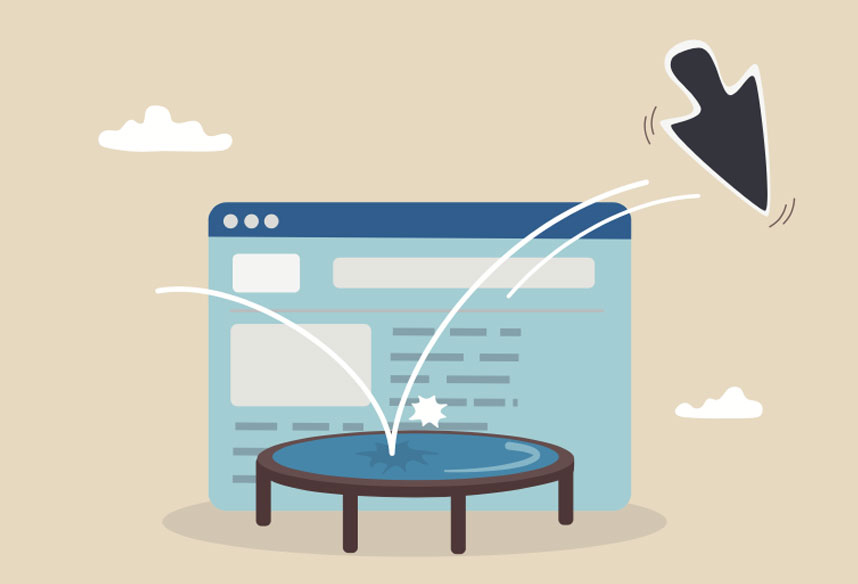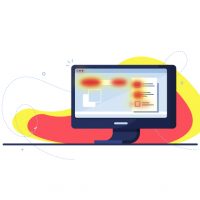3 Tools to reduce bounce rate on your ecommerce site
Bounce rate for eCommerce sites is the percentage of visitors that leave your website without completing the intended action such as making a purchase or filling a form. Needless to say, this is a problem that eCommerce business owners need to solve quickly.
In this article, we have listed three must-have tools that will help you reduce bounce rate on your eCommerce site.
PageSpeed Insights to Improve the Core Web Vitals
PageSpeed Insights is a tool developed by Google that will help eCommerce site owners improve bounce rates. It lets the site owners know the value of core web vitals for each of the pages and gives them suggestions to improve it.
Core Web Vitals help determine how good the on-site experience is for the visitors. It has three parameters –
- Largest Contentful Paint (LCP) – It is the time taken for the largest image on the page to load.
- First Input Delay (FID) – It is the time taken for the page to respond to a user’s action.
- Cumulative Layout Shift (CLS) – It is the degree of movement of multimedia objects on the web page.
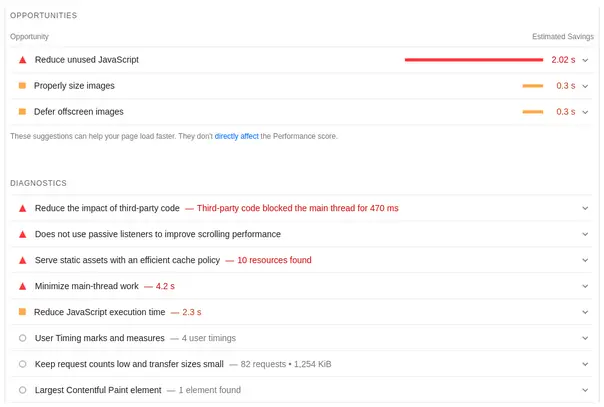
Improving on the above three numbers to optimize the bounce rate for eCommerce sites. Here are some quick tips you can implement to improve your core web vitals.
- Reduce JavaScript Execution – This will improve your FID score by making it more responsive.
- Implement lazy loading – This will make your page load faster by loading the image when the reader scrolls to it.
- Optimize and compress images – It will make your page lighter.
- Provide proper dimensions while embedding media – This will prevent the sudden shifting of content when the images load.
- Improve server response time – Use a good CMS platform with high uptime. This will also ensure a great experience for your visitors.
Crazy Egg to Test Design Elements
The design of an eCommerce site determines how easy it is to browse through. Here is why you should ensure that your eCommerce site is designed well –
- It will directly reduce your bounce rates as 85% of a visitor’s first impressions are design-related.
- It will help you deliver a smooth browsing experience as your visitor won’t struggle to find information all over the page.
- It will get you more conversions. If you can relay your information well, your audience can easily act on it.
One of the most common mistakes eCommerce site owners can do is to put too much information. Take a look at the following example.

There are many things that are wrong from the design perspective. Let’s go through them one by one –
- Too many links: Providing a visitor with too many options at once will confuse them.
- Not visually pleasing: The contrast and design don’t give a smooth browsing experience.
- No clear call to action (CTA): If you wanted to buy something, you will need a few minutes to figure out where you want to click.
Now, imagine you are a buyer and have landed on this site. What are the chances that you will make a purchase?
To know which design suits your website, you can do A/B testing. A/B testing is a process through which you can test various elements of your eCommerce site to improve bounce rate.
Here is an illustration that will help you understand.

Basically, you test two different designs with two groups of the same audience and go with the one that is liked the most.
Crazy Egg is a platform where you can easily compare and contrast two design types of various visual elements of your eCommerce site.
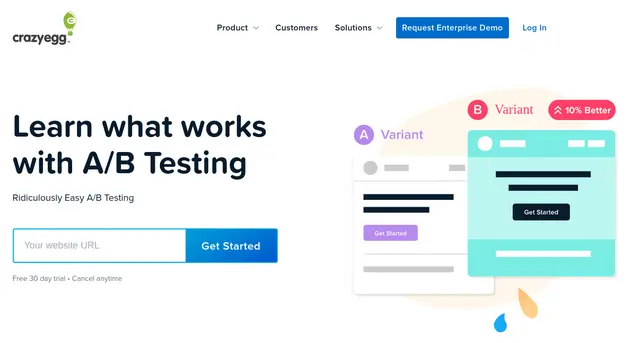
You can get various designs tested and use the one your potential audience loved most. This will optimize the bounce rate of your eCommerce site as your visitors will see a version that they like.
Webmaxy to Get Feedback and Track Visitors
Although A/B testing is a tried and tested method to know what your audience really wants, there are certain disadvantages –
- Consumes a lot of resources: Setting up A/B testing is hard on the budget and the calendar. It often means hiring more professionals or an agency that does that.
- Won’t reveal usability issues: The underlying issues won’t be revealed with A/B testing as you will be testing different iterations, not concepts.
- Short-lived output: Websites, web applications, etc., change really fast. If you spend months getting some data, it will become obsolete within a year.
The above reasons don’t make it a desirable option for small to medium-sized businesses that need results fast in a budget-friendly way.
Fortunately, Webmaxy provides a cost-effective method for budding eCommerce businesses to reduce their bounce rates.
How Webmaxy helps get feedback from visitors
Who can tell you what your audience wants better than your audience?
Webmaxy’s survey tool helps eCommerce owners send pop-ups to their visitors and get feedback on their page.
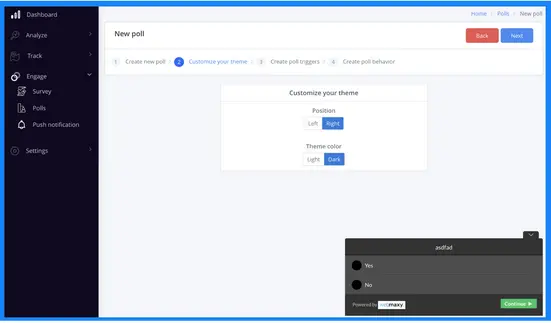
Webmaxy offers lots of templates that you can use to create surveys within seconds.
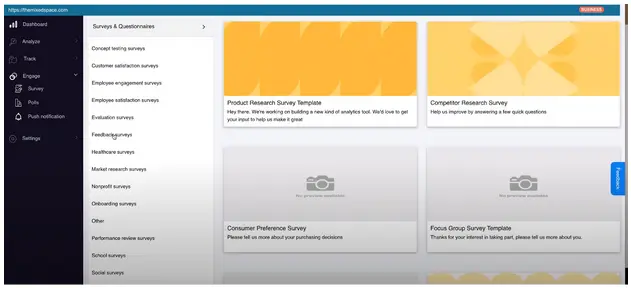
Here are the benefits of using Webmaxy to gather visitors’ feedback to improve the eCommerce bounce rate.
- These surveys will take minutes to set up as it comes with predefined templates for most use cases.
- They are cost-effective and are easy to set up even by non-technical professionals.
- It will give you the results as soon as it gets the inputs from your visitors due to which you can act immediately.
Sometimes, surveys are not enough and you need more details on how your visitors are actually interacting with your site.
How Webmaxy helps you track visitors on-site
Webmaxy tracks the live sessions of your users. For every unique user, a new profile is created and they are tracked through cookies to record their subsequent visits.
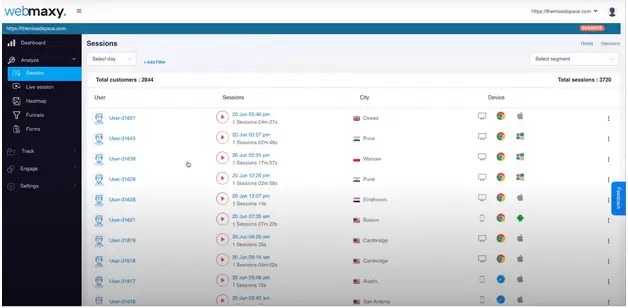
Furthermore, it also generates heatmaps to let you know what works and what doesn’t. This lets you test different design elements with your audience and iterate accordingly.

Recordings of live sessions and heatmaps will give you a graphical insight that you can rely on to improve bounce rate of your eCommerce site.
The biggest advantage eCommerce site owners will get with Webmaxy is a dashboard, where they will find all the details about their site visitors.
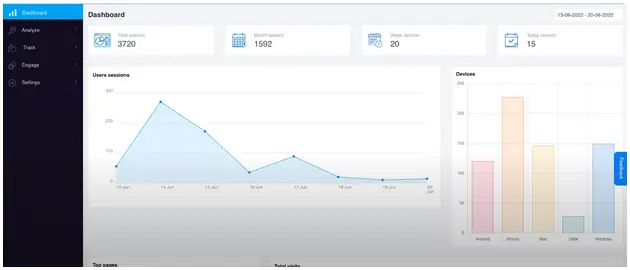
This marks Webmaxy as a “must-have” for all small to medium-sized eCommerce businesses.
Conclusion
You can reduce the bounce rate of your eCommerce website in three simple ways (with tools) –
- Optimize your core web vitals for a better web experience. Tool: PageSpeed Insights.
- Conduct A/B testing to optimize visual elements and user experience. Tool: Crazy Egg.
- Get feedback from your audience and track them live on your site to get actionable insights immediately to improve your eCommerce website. Tool: Webmaxy.
Webmaxy offers a free basic plan, perfect for budding eCommerce businesses.
Create an account and get data-backed insights that will reduce bounce rate on your eCommerce site.
FAQ’s
The bounce rate in an ecommerce website refers to the number of visitors that comes to your website but leave before going to the second web page. Bounce rates are calculated by dividing the total number of one-page visits by the total number of website visitors.
An average bounce rate is considered between 26% and 70%, where the optimal range is between 26% to 40%. Nonetheless, having a bounce rate below 20% is unlikely, if you see that in your data report then you probably need to double-check it.
The higher bounce rate of the page indicates that your web page is not meeting the users’ expectations. There are several ways to improve the bounce rate of the page that we have mentioned below.
– Reduce the page load time
– Optimize for relevance
– Place a single CTA appropriately
– Optimize for mobile
To get a low bounce rate, try to add relevant and valuable content that encourages people to stay. Nowadays, people use mobiles a lot so ensure that your web pages are optimized for them. You can use WebMaxy Analyzer to identify the problem areas of your site pages and make significant changes to obtain a low bounce rate.
